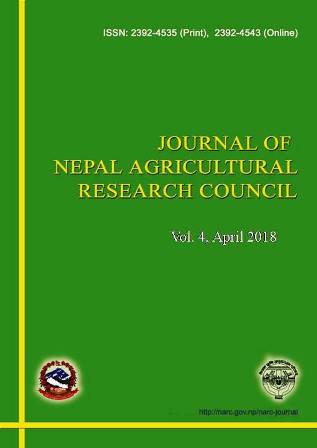Seasonal and Altitudinal Prevalence of Fascioliasis in Buffalo in Eastern Nepal
DOI:
https://doi.org/10.3126/jnarc.v4i1.19689Keywords:
Altitude, Buffalo, Season, Fascioliasis, Dhankuta and Sunsari districtsAbstract
Buffalo is the most important livestock commodities for milk, meat production and several other multipurpose uses distributed densely from southern tarai to northern mid-hills in Nepal. Among several internal parasitic diseases fascioliasis is highly economic one caused by Fasciola in buffaloes. However, there are only few studies carried on prevalence of fascioliasis emphasizing buffaloes in relation to seasonal (summer and rainy, and winter) and altitudinal variations. Therefore, we examined prevalence of fascioliasis seasonally and vertically. For the purpose, we selected two districts of eastern Nepal and sampled from low altitude area known as Madhesha ranging from 175-200, Dhankuta from 800-1200 m, and Murtidhunga from 1800-2200 m elevation from the sea level, representing tarai, mid hills and high hills, respectively. Altogether from February 2013 to January 2014 at every two months interval we collected 798 fecal samples from buffaloes; 282 from Murtidhunga, 239 from Dhankuta and 277 from Madhesha. The samples were examined microscopically for the presence of Fasciola eggs using sedimentation technique. Results showed that overall prevalence of fascioliasis in buffaloes was 39.9% (319/798), ranging highest 42.6%in Madhesha followed by 39.7% in Murtidhunga and 37.2% in Dhankuta, respectively. The prevalence of fascioliasis was found to be significantly (p <0.05) high in winter (44.9%) comparing to rainy season (34.4%). The prevalence of fascioliasis in buffaloes was relatively higher in low altitude than high altitude, although it was not statistically significant (p <0.05). In our findings the female buffaloes showed higher prevalence for fascioliasis than in male. Since the fascioliasis in buffaloes is highly endemic, thus strategic deworming in high risk period is recommended along with measure to prevent pasture contamination with buffalo feces.




